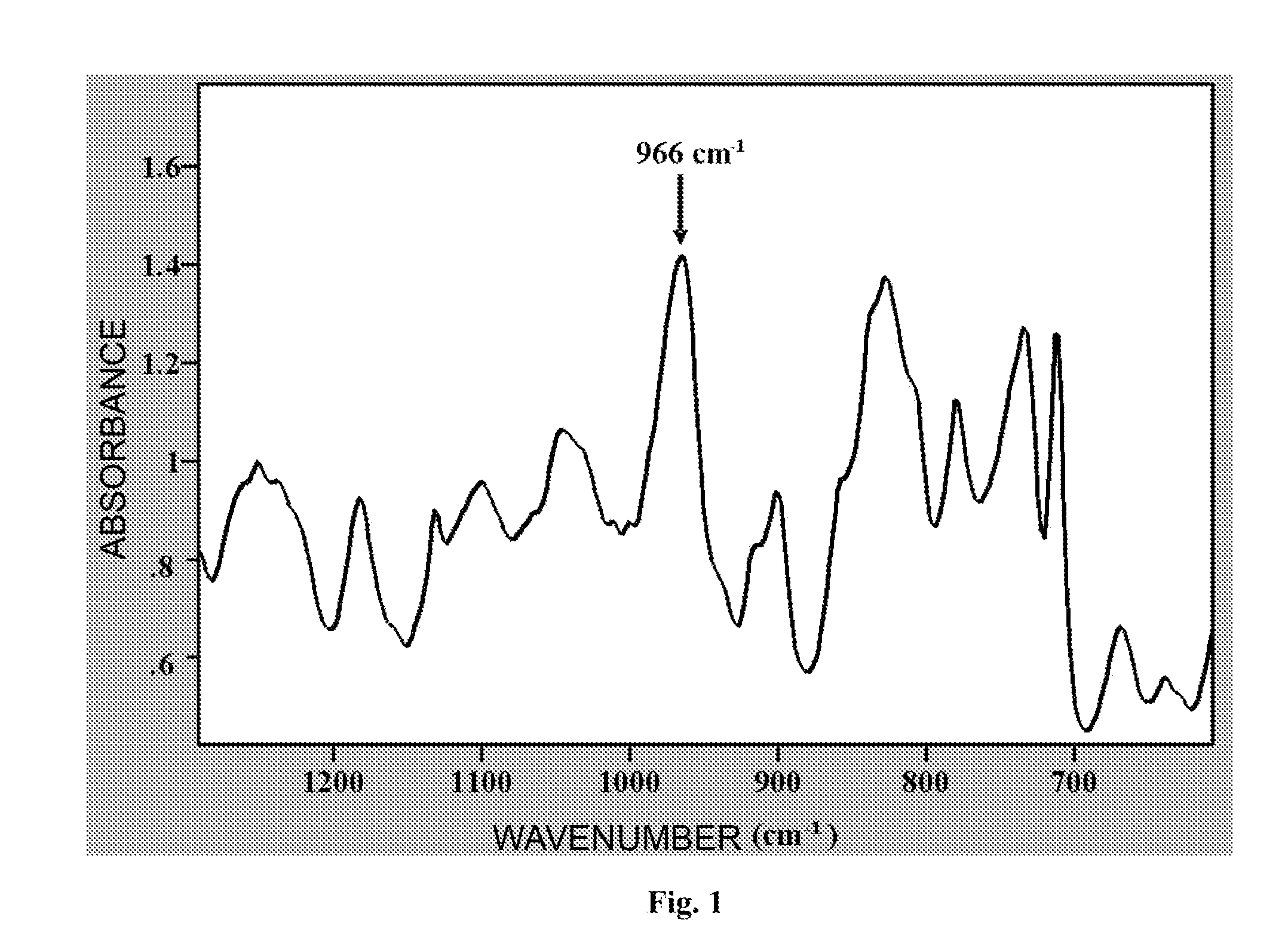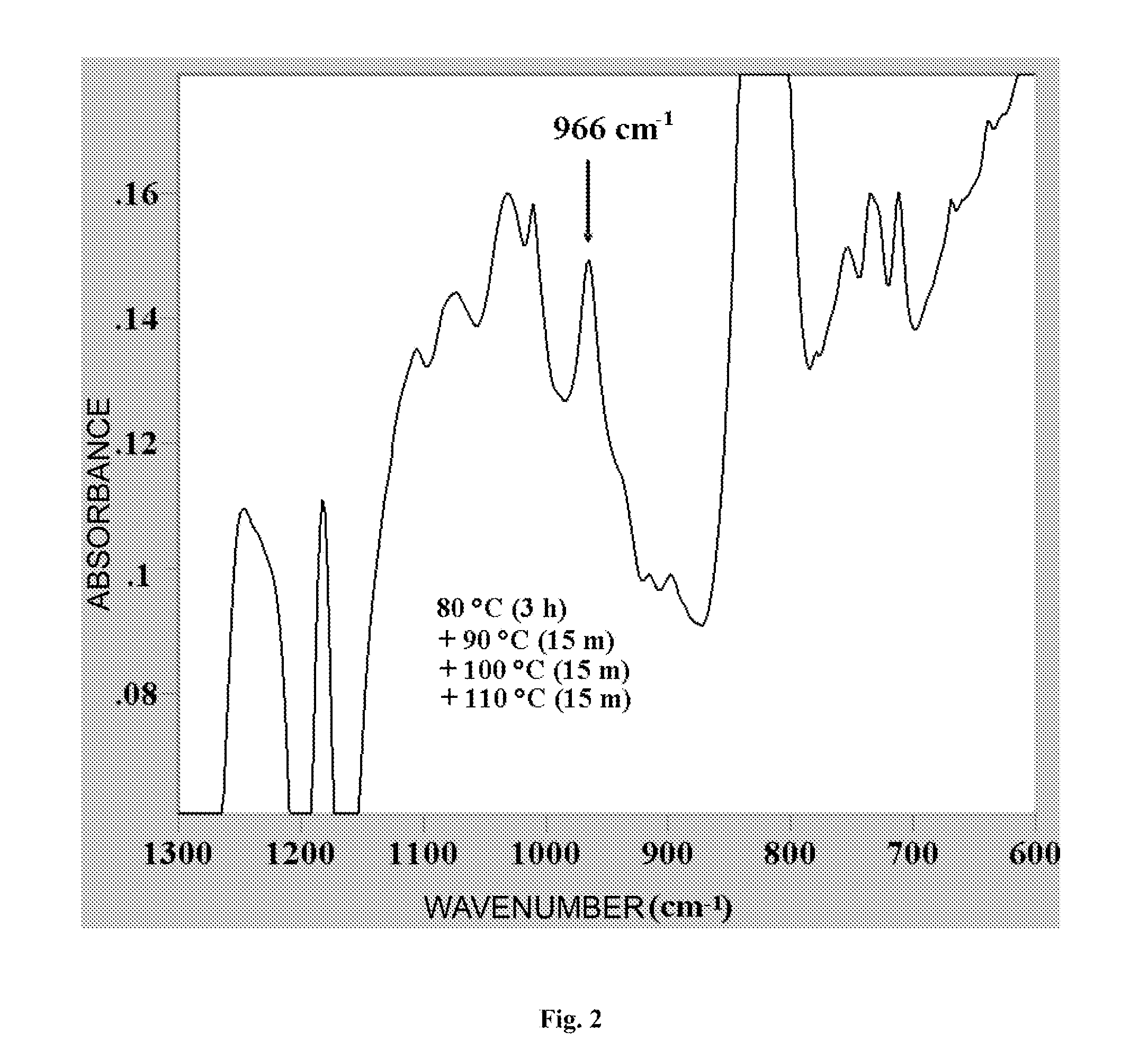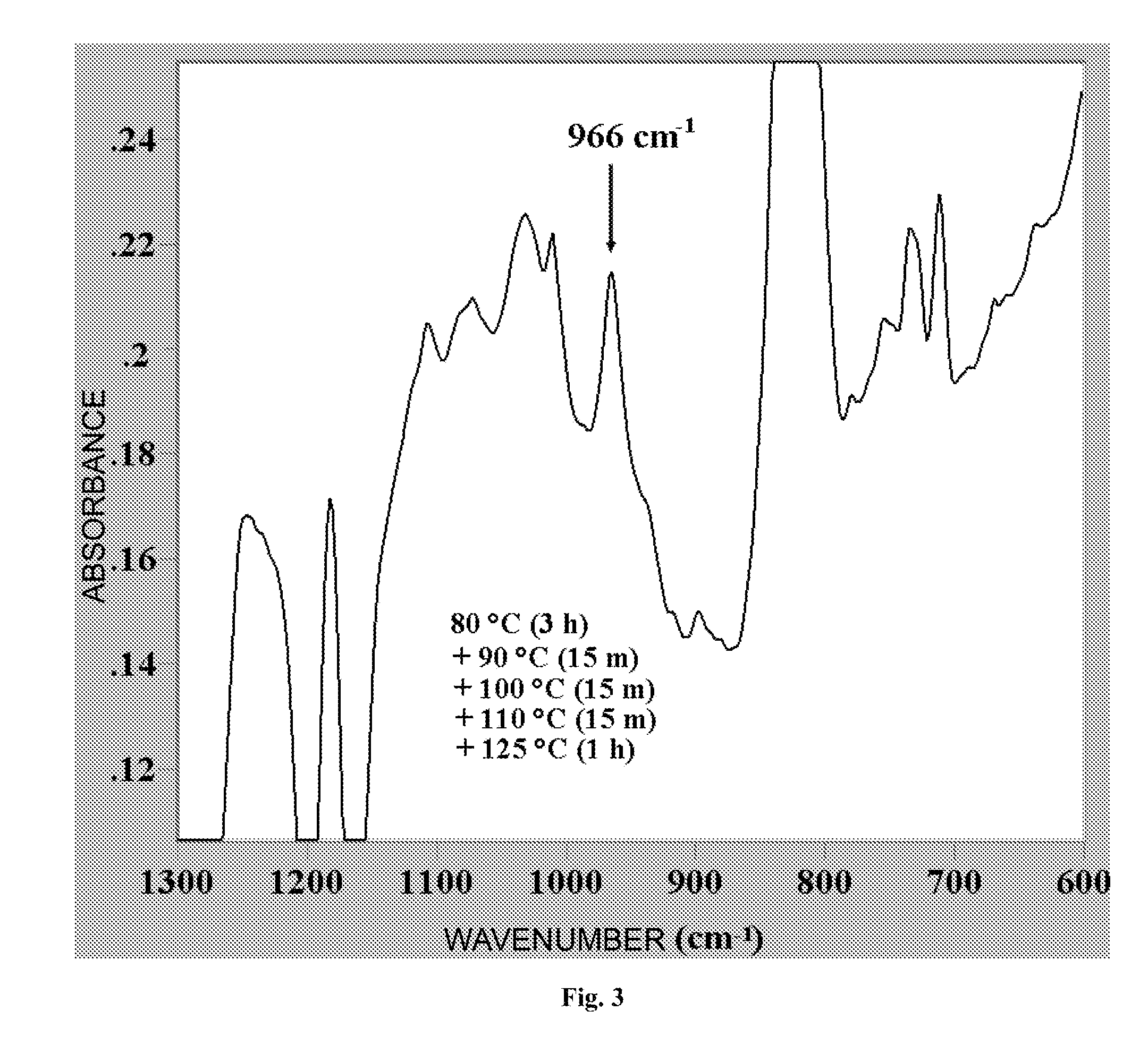Process for preparing self-healing composite materials of high efficiency for structural applications
a composite material and high efficiency technology, applied in the field of thermosetting polymers and polymer composites with structural function, can solve the problems of monomer release, subject to damage, compromising the integrity of the structure, etc., and achieve the effect of increasing the degree of crosslinking of the metathesis produ
- Summary
- Abstract
- Description
- Claims
- Application Information
AI Technical Summary
Benefits of technology
Problems solved by technology
Method used
Image
Examples
example 1
[0038]A mixture of the following components, in the stated amounts, is prepared in this example:
DGEBA (precursor of epoxy resin, trade name70gramsEPON 828)1,4-Butanediol-diglycidyl ether (reactive diluent)17gramsDichloro(o-isopropoxyphenylmethylene)(tricyclo-4gramshexylphosphine)ruthenium(II) (catalyst HG1);2,4,6-tris(dimethylaminomethyl)phenol (curing agent,9gramstrade name Ancamine K54)Total100grams
[0039]The procedure adopted for preparing the aforementioned mixture is as follows. The epoxy precursor (EPON 828) was mixed mechanically with the reactive diluent at a temperature of 90° C., maintained with an oil bath, and then the catalyst HG1 in the form of crystalline powder, as supplied by the company Aldrich, was added. The catalyst was dispersed at molecular level by mechanical agitation of the mixtures maintained at 90° C. for 90 minutes.
[0040]To verify complete dispersion and dissolution of the catalyst, and that its catalytic activity remained unchanged, spectroscopic investi...
example 2
[0049]Example 2 was carried out using a procedure similar to the preceding example, except that a smaller amount of catalyst was used, equal to 3% of the total weight of the mixture. The respective FT / IR spectra (cf. FIGS. 6 and 7) do not show any decrease of the peak at 966 cm−1, so that in this case too, the catalytic activity of the HG1 catalyst remained unchanged.
[0050]Naturally, without prejudice to the principle of the invention, the details of its execution and the embodiments can vary widely from what is described purely as examples, while remaining within the claimed scope. In particular, the dispersion of the catalyst at molecular level—i.e. the complete dissolution of all of its molecules in the mixture containing the precursor of the epoxy polymer—can be obtained by mechanical mixing or any equivalent procedure known by a person skilled in the art.
PUM
| Property | Measurement | Unit |
|---|---|---|
| temperature | aaaaa | aaaaa |
| temperature | aaaaa | aaaaa |
| temperature | aaaaa | aaaaa |
Abstract
Description
Claims
Application Information
 Login to View More
Login to View More - R&D
- Intellectual Property
- Life Sciences
- Materials
- Tech Scout
- Unparalleled Data Quality
- Higher Quality Content
- 60% Fewer Hallucinations
Browse by: Latest US Patents, China's latest patents, Technical Efficacy Thesaurus, Application Domain, Technology Topic, Popular Technical Reports.
© 2025 PatSnap. All rights reserved.Legal|Privacy policy|Modern Slavery Act Transparency Statement|Sitemap|About US| Contact US: help@patsnap.com



